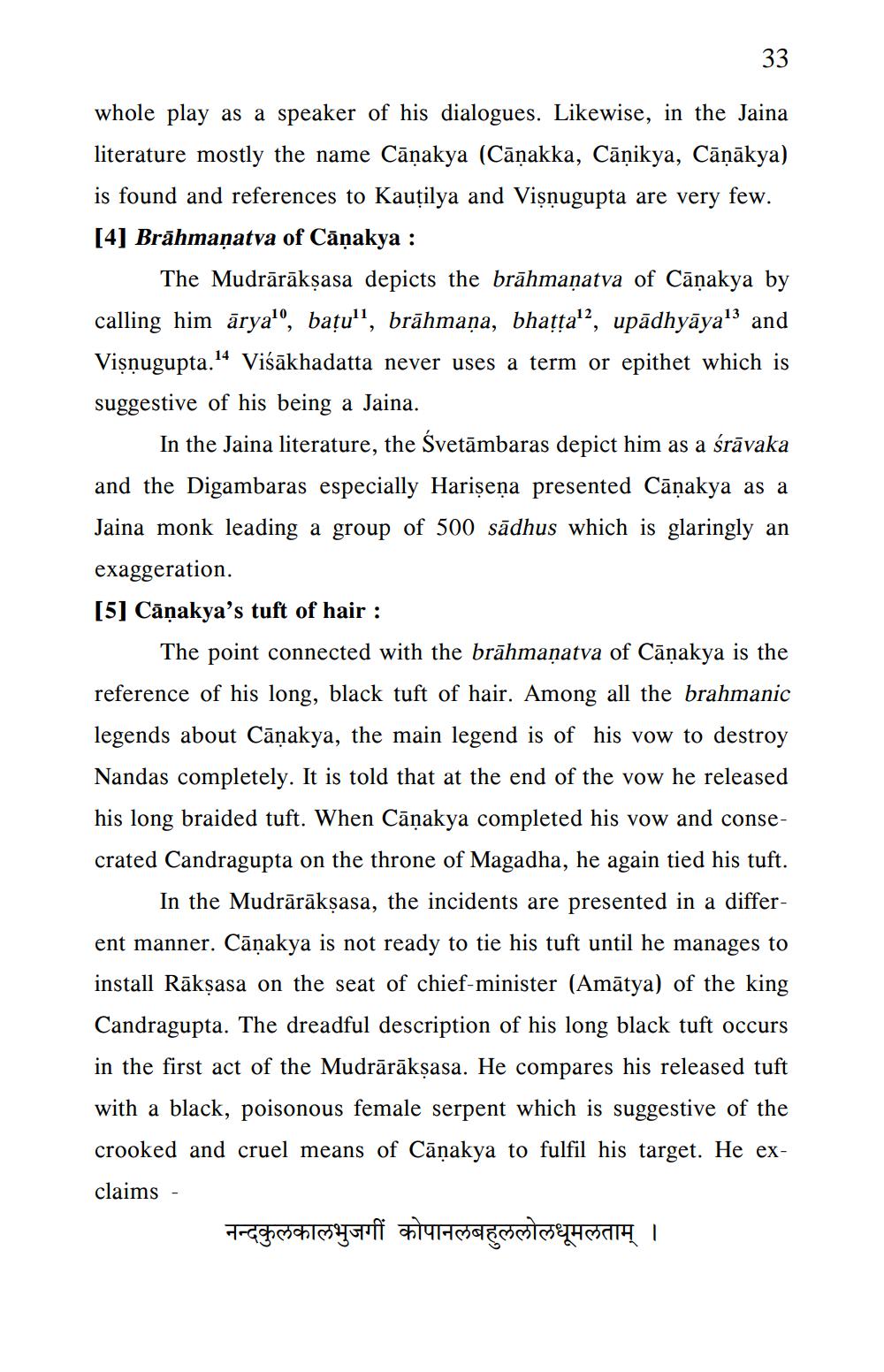________________
33
whole play as a speaker of his dialogues. Likewise, in the Jaina literature mostly the name Cāņakya (Cāņakka, Cāņikya, Cāņākya) is found and references to Kautilya and Vişnugupta are very few. [4] Brāhmaṇatva of Cāņakya :
The Mudrārākṣasa depicts the brāhmaṇatva of Cāņakya by calling him ārya"), batu", brāhmaṇa, bhatta!?, upādhyāyal and Visnugupta.!4 Viśākhadatta never uses a term or epithet which is suggestive of his being a Jaina.
In the Jaina literature, the Śvetāmbaras depict him as a śrāvaka and the Digambaras especially Harișeņa presented Cāņakya as a Jaina monk leading a group of 500 sādhus which is glaringly an exaggeration. [5] Cāņakya's tuft of hair :
The point connected with the brāhmaṇatva of Cāņakya is the reference of his long, black tuft of hair. Among all the brahmanic legends about Cāņakya, the main legend is of his vow to destroy Nandas completely. It is told that at the end of the vow he released his long braided tuft. When Cāņakya completed his vow and consecrated Candragupta on the throne of Magadha, he again tied his tuft.
In the Mudrārāksasa, the incidents are presented in a different manner. Cāņakya is not ready to tie his tuft until he manages to install Rākṣasa on the seat of chief-minister (Amātya) of the king Candragupta. The dreadful description of his long black tuft occurs in the first act of the Mudrārākṣasa. He compares his released tuft with a black, poisonous female serpent which is suggestive of the crooked and cruel means of Cāņakya to fulfil his target. He exclaims -
नन्दकुलकालभुजगी कोपानलबहुललोलधूमलताम् ।




